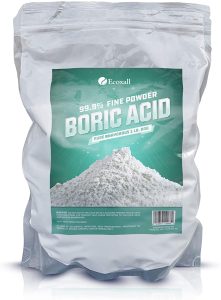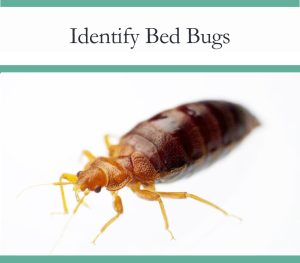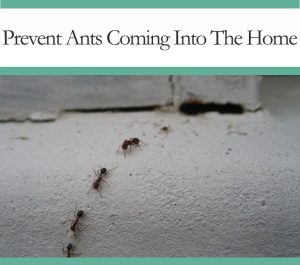How to Get Rid of Termites
infraorder Isoptera
When looking how to get rid of termites, speed is essential. Once you notice any signs of infestation, like the infamous mud tubs or hollow wood, you need to act fast.
The annoying pests can wreak havoc in your home before you even realize they’ve nested. As a result, the cost of home repairs can amount to hundreds of dollars.
Luckily, termites aren’t indestructible, and you can usually deal with the infestation yourself. In this article, we’ll show you how to get rid of termites with some good old-fashioned DIY techniques.
In addition, we included helpful tips on how to avoid an infestation in the future and ensure the safety of your home.

Termite Soldier 
infraorder Isoptera

Check for Signs of Termite Infestation
Before you can get rid of termites, you need to learn how to spot the signs of an infestation. Termites can go unnoticed for long periods, and if you don’t know what to look for, you might end up with severe damage. So you’re going to have to examine every nook and cranny of your home, especially the attic and fuse boxes, and check for these signs:
Hollow Wood
If you bang on solid wood and hear a hollow sound, you’re most likely dealing with termites. Also, make sure to look into every crawlspaces and foundation beam in your basement using a screwdriver and flashlight. Check for hollowness and push the screwdriver into the wood to test for strength. If the wood yields too quickly or breaks apart, that’s a clear sign of infestation.
Nests and Mud Tubes
Subterranean termites build their underground pathways as they eat their way through your home. The resultant mud tubes are roughly the width of a pen and are composed of wood and dirt. Dry wood termites do not produce mud tubes; they have nests instead.
Termite Droppings or Frass
Keep an eye out for termite droppings. The droppings look like feces pellets that are wood colored or have a deep brown shade. The frass will pile up near weakening timber, indicating a termite infestation.
Shedding
Subterranean termites drop their wings in heaps as they start a new colony.
Peeled Paint
When termites eat through drywall, moisture seeps into the gap between the surface and the paint, causing the paint to peel. There are many alternative reasons for paint damage, but it’s most likely termites if you notice this together with other signs.

Establish the Type of Termite
Once you’ve established you have an infestation, you need to figure out what type of termites are present to determine the proper treatment for how to get rid of termites. Subterranean termites and dry wood termites are the two main types found in the United States, and not all treatments work for both. For example, essential oils can keep dry wood termites at bay, but they won’t do much against foraging termites.
Subterranean termites typically nest in the soil, foundational wood, and compost piles. As mentioned, they build mud tubes or underground paths out of wood and earth to move freely in your home. Because they’re saw-toothed, the species can cause more damage than their dry wood counterparts. If they go unnoticed for a long time, subterranean termites can bring down the entire structure.
Their caste determines the size and color of these types of termites. Workers are typically 1/8 inch long and have a pale creamy color. Warrior termites are the same length and shade but have a more pronounced brown head with large mandibles.
Subterranean termite colonies can expand with incredible speed, with populations ranging from 100,000 to 1 million termites. That’s why it’s essential to act quickly in case of an infestation.
Dry wood termites may live entirely in wood instead of subterranean termites that require soil contact to survive. They don’t migrate by mud tubes, and they’re more typical for warm coastal areas.
Dry wood termites come in a variety of sizes and colors, depending on the caste. Warriors have a length of 3/8 of an inch, while reproductive are 1/2 inch long. The color spectrum of winged dry wood termites ranges from yellow-tan to light brown. Luckily, their colonies tend to be smaller than subterranean termites, with a population of approximately 2,500 each.

Tips on How to Get Rid of Termites
After you’ve determined the termite species, you can move on to how to get rid of termites. Luckily, there are many DIY solutions available, ranging from standard chemical pesticides to organic alternatives.
Set Up a Cardboard Trap
Stack two wet pieces of cardboard on top of each other to make a DIY termite bait. The insects will be attracted to the cellulose in the cardboard and end up trapped between the two wet pieces while they’re devouring them. The entire setup should then be taken outdoors and burned. The cardboard trick works with both subterranean and dry wood termites.
Unfortunately, this method isn’t that effective since it’s not likely to catch all of the termites due to their high reproduction speed. Also, as the termite corpses accumulate, other termites will learn to stay away from the cardboard. Therefore, it’s best to combine this approach with other extermination methods.
Use Beneficial Nematodes
Beneficial nematodes are parasites to termites and several other plant pests. The microscopic roundworms penetrate the termite host and produce a bacteria that infects their blood, killing the insect in a few days-time. It’s an effective way to deal with a subterranean termite colony.
You can spread a mixture of nematodes, cold water, and soil across the affected sections of your yard. Also, nematodes should be used as soon as possible if the soil temperature is over 60° F. If you don’t plan to use them right away, store them in the refrigerator. And since UV radiation will harm them, it’s best to plant them early in the morning or after sunset.
Apply Boric Acid to Infected Areas
Boric acid is one of the most successful anti-termite solutions. The highly efficient chemical is used as the primary component in many termite pesticides sold for home use. Boric acid dehydrates the pest and causes the termite’s nervous system to shut down. It works on both termite species.
It’s best to apply the acid in several bait stations, such as cracks in walls, ceilings, and floors. In addition, here’s what you should keep in mind when using this technique:
- Boric acid should be uniformly coated or sprayed on wood (or any cellulose substance).
- Regularly inspect the bait station and refill it with boric acid as needed. Termite corpses should be visible nearby.
- If you have an open infestation of subterranean termites, plant the boric acid bait in your garden.
Make a Barrier Using Termiticide
You can get anti-termite treatments like Termidor SC or Taurus SC in your local home improvement stores in some areas. The products are used by professional exterminators, meaning they’re highly effective.
You can pour the termiticide around the outer perimeter of your home and create a termite barrier. Unfortunately, subterranean termites can’t detect the odor, so they won’t avoid it. The product then spreads the same way a virus does. When one termite comes into touch with the chemicals, it unwittingly spreads it across the colony, infecting other termites and eventually destroying it.
Termite Control Products
In contrast to termiticides, termite control products or direct chemicals can be applied to the house’s interior. Also, they’re much more accessible since you can get them in most hardware stores.
There are many different types of termite-control products, from liquid solutions to foam. The products should be sprayed directly into gaps, crevices, and holes that termites use to hide. The odorless chemicals will expand before dissipating, poisoning the termites as soon as they come in contact.
Install Termite Bait
Termite baits are a tried and true method against subterranean termites. The pests are drawn to the poison within bait placed around the perimeter of the foundation. The slow-acting poison stops termites from growing normally, killing them when they attempt to molt. And since the poison takes a long time to take effect, infected termites will transport the pesticide back to the colony and spread it to more termites.
Use Natural and Essential Oils
Orange and neem oils can exterminate termites over time by preventing them from shedding their skin or laying eggs. Here’s how to create a termite-repellent mixture with essential oils:
- Combine two cups of water, a few drops of dish soap, and around 10 drops of your preferred oil.
- Pour it in a spray bottle.
- Spray the liquid on infected areas after shaking it lightly. You can also drench the entire termite nest for optimal results.
Apart from termites, many other pests are affected by clove oil, garlic oil, or neem oil. However, the mixture doesn’t kill termites on touch. Instead, the pests have to consume it for it to take effect. It may also take several treatments to be successful.
Hire Professional Exterminators
Of course, if none of the homemade or store-bought remedies work, you should hire the pros to take care of the termite infestation. Unfortunately, while DIY approaches are undoubtedly helpful, they often can’t come close to professional equipment or experience.
Trained exterminators will know how to locate entrance sites, identify colonies, and devise a successful treatment strategy. Depending on the unique situation in your home, most pest control companies employ a combination of different termite-control methods.
When looking for expert exterminators, you should:
- First, get estimates from several different companies and then compare costs.
- Before you choose a company, look into its service history through the Structural Pest Control Board.
- Obtain a formal agreement that guarantees total termite eradication for two years. After that, you may need them to return regularly to check for new infestations. That way, there won’t be any additional charges when that happens.

How to Prevent Termite Infestations in the Future
There are several things you can do to make your home uninhabitable for termites. The following are the most effective ways to prevent future infestations.
Keep Your Home Dry
Because termites require water to thrive, they’re naturally drawn to moist environments. That’s why you need to ensure any standing water is contained and all leaks are dried. Also, suction up any excess moisture both inside and outside your home. Termites love damp gutters, so always keep them clear of debris for better protection.
Cover Every Crevice
Sealing all entrances and gaps surrounding your home is the most crucial step in preventing termites from infesting your home. Termites can also enter your home through cracks around electrical wires and pipes that lead to and from your property. Aside from that, it’s not a bad idea to install screens on your windows, doors, and porch.
Take Care of the Wood
Because termites feed on wood, try reducing the amount of the material in your home. For example, keep firewood and branches in a separate secured location. If you have to store wood on your property, keep it entirely covered and dry. You can also apply permethrin as a precaution.
Apply Pest Repellents
When remodeling your home, try adding one tablespoon permethrin to a gallon of paint, wallpaper adhesive, or wood polish. The substance can also be added to the flooring cement or the adhesive used to install wooden floors. Again, there’s no additional danger since permethrin is a safe insecticide that’s tested non-toxic for humans.
Form a Protective Barrier Around Your Home
Maintaining a protective barrier around the external perimeter of your home is one of the most effective methods to prevent future termite infestations. And, if you do it yourself with professional-grade solutions like Termidor SC or Taurus SC, you won’t have to spend a lot of money. Both products include termiticide in them and are administered as a liquid.
Fipronil and hexaflumuron are the two primary insecticides used to kill termites. The chemical serves as an active component in most liquid termiticides. Since it can kill termites on touch in high quantities, it’s often used by professional exterminators.
Hexaflumuron is a termiticide specially designed for termite baits. Once the pests locate the bait station, they unknowingly consume the poison along with the food source, leaving a trail for other termites to follow. The termites then spread the chemical to the rest of the colony.

Who You Gonna Call?
Termite infestations can cause severe damage to your home if not dealt with properly. Luckily, there are several DIY tricks that you can try on these nasty pests. In addition, most hardware stores keep highly efficient termite-control products that can help you protect your home.
Of course, if you’re still unsure how to get rid of termites, you can always turn to professional help. Pest control services are well-equipped to deal with all types of termites. Furthermore, most pest extermination companies offer regular inspections, decreasing the chances of recurring infestations.



